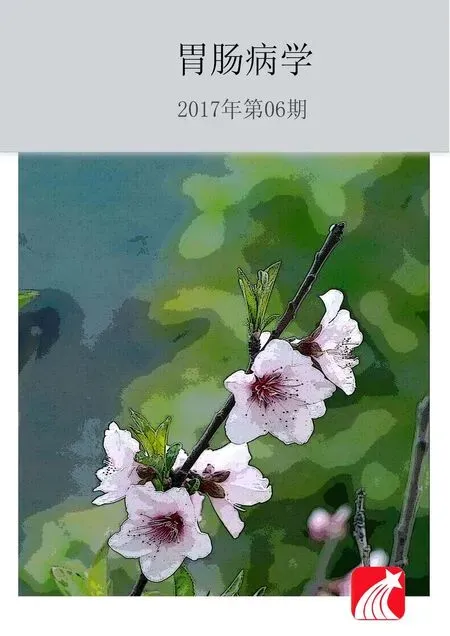蠕虫治疗炎症性肠病的研究进展
武 艺 李 路 陈 熙
安徽医科大学第一附属医院消化内科(230022)
蠕虫治疗炎症性肠病的研究进展
武 艺 李 路 陈 熙*
安徽医科大学第一附属医院消化内科(230022)
炎症性肠病(IBD)是一类病因不明的肠道慢性非特异性炎性疾病,包括溃疡性结肠炎(UC)和克罗恩病(CD)。已知与IBD发病相关的危险因素包括环境、遗传和免疫因素等。近年有关蠕虫治疗IBD的基础和临床研究逐渐增多,认为蠕虫对IBD有积极的治疗作用且安全性较高。本文就蠕虫治疗IBD的研究进展作一综述。
蠕虫; 炎症性肠病; 免疫; 细菌; 治疗
炎症性肠病(IBD)是一类多种病因引起、异常免疫介导的肠道慢性、复发性炎症,主要包括溃疡性结肠炎(UC)和克罗恩病(CD)。伴随着现代化进程的推进、农村向城市迁徙、卫生状况的改善以及疫苗接种普及等,大大减少了人们与微生物的接触机会,可能促进了IBD和其他自身免疫病的发生。早在1989年,Strachan提出了“卫生学假说”,认为人免疫性疾病与幼年时期缺乏外源刺激(细菌、寄生虫等)有关[1]。流行病学资料显示,与发展中国家相比,发达国家IBD的发病率更高;与农村相比,城市IBD患病率更高。目前我国IBD的患病率呈增长趋势[2]。越来越多的研究表明,蠕虫和虫源性分子可抑制自身免疫病的过度炎症性免疫反应或过敏反应[3]。蠕虫治疗可显著改善IBD患者的临床症状和肠道炎症,且无明显不良反应[4-5]。本文就蠕虫治疗IBD的研究及其作用机制的研究进展作一综述。
一、蠕虫治疗IBD的研究
1. 动物实验:目前多采用DSS、DNBS和TNBS诱导实验性结肠炎动物模型来模拟人肠黏膜损伤。最初Elliott等[6]选用曼氏血吸虫(Schistosomamansoni)感染TNBS诱导的结肠炎小鼠,结果显示肠道炎症显著改善。随后多项研究分别用膜壳绦虫、肠道多形螺旋线虫、旋毛线虫等蠕虫感染不同结肠炎模型小鼠,发现均有一定的缓解肠道炎症的作用。进一步研究发现,不同蠕虫对不同结肠炎动物模型的作用不尽相同。曼氏血吸虫卵和日本血吸虫卵对TNBS诱导的小鼠结肠炎可分别发挥预防和抑制炎症的作用。膜壳绦虫幼虫可减轻DNBS诱导的动物模型肠道炎症,但可加重恶唑酮诱导的结肠炎症反应。
为减少蠕虫治疗的风险性(如侵袭性等),对蠕虫相关提取物的疗效进行研究,发现重组棘唇线虫(Acanthocheilonemaviteae)半胱氨酸蛋白酶抑制剂(cystatin)、重组狮弓蛔虫(Toxascarisleonine)半乳凝素-9同源物(rTl-GAL)、锡兰钩虫(Ancylostomaceylanicum)粗提取物等能预防DSS诱导的结肠炎症,对TNBS和DNBS等诱导的结肠炎模型亦可发挥防治作用。此外,线虫蛋白天冬氨酰tRNA合成酶可抑制T细胞转移诱导的小鼠结肠黏膜炎症[7]。
2. 临床研究:Summers等[8]给予4例CD患者和3例UC患者口服猪鞭虫卵,结果显示3例CD患者克罗恩病活动指数(CDAI)≤150分,3例UC患者简易结肠炎疾病活动指数(SCCAI)≤4分,说明达到临床缓解。Summers等[9]的另一项研究给予29例活动期CD患者口服猪鞭虫卵,24周后发现79.3%的患者症状改善(CDAI下降>100分);另一项针对54例活动期UC患者的随机双盲安慰剂对照试验[10]中,治疗组患者每两周口服2 500个猪鞭虫卵,12周后43.3% 的患者溃疡性结肠炎活动指数(UCDAI)<4分,而安慰剂组仅为16.7%。Croese等[11]以美洲钩虫感染9例CD患者,结果显示4例患者平均CDAI和炎症性肠病生活质量问卷(IBDQ)评分有所改善,而另4例患者在第20周仍保持缓解状态。另一项随机双盲、安慰剂对照临床研究[5]中,36例CD患者随机接受安慰剂或三个不同剂量猪鞭虫卵(500个、2 500个、7 500个)的短期(2周)和长期(6个月)治疗,结果显示单剂量猪鞭虫卵治疗CD的耐受性良好(可多达7 500个)。近年,多项评估猪鞭虫卵治疗中-重度CD的疗效和安全性以及通过检测肠道黏膜免疫反应评估猪鞭虫卵治疗UC患者的有效性和安全性的临床试验正在进行中。
二、蠕虫治疗IBD的机制
1. 免疫细胞和细胞因子:蠕虫对IBD免疫机制的影响表现为对Th1/Th2、Treg/Th17轴相关免疫应答的调节,以及对树突细胞、巨噬细胞、Toll样受体(TLR)等免疫调节的影响。正常情况下,人Th1与Th2型免疫应答相互调节保持平衡,CD以异常Th1型免疫应答为主,UC以异常Th2型免疫应答为主。理论上,蠕虫作为外源性有害物质感染后,可抑制Th1型免疫应答,减少IFN-γ、IL-12等促炎细胞因子的分泌;同时引起嗜酸性粒细胞聚集、IgE产生,增强Th2型免疫应答,并增加IL-4、IL-13、IL-5等细胞因子的分泌;但其通过调节Treg/Th17轴可实现对UC等Th2型免疫疾病的炎症抑制。Treg细胞通过分泌调节性细胞因子IL-10、TGF-β等下调Th17型免疫反应,抑制效应性淋巴细胞功能介导的肠道免疫耐受,维持肠黏膜稳态,防止肠道免疫系统对肠道菌群的过度免疫。蠕虫感染可上调Treg细胞应答,有动物实验[12]使用曼氏血吸虫可溶性成虫蛋白(SmSWP)感染TNBS诱导的结肠炎模型,结果发现IL-17生成减少,T细胞分泌的IL-10和TGF-β增多,肠道炎症受到抑制。Hang等[13]发现,从感染肠道多形螺旋线虫的小鼠中分离出的Foxp3+/IL-10+Treg细胞转染结肠炎小鼠,可防止结肠炎的发生。
树突细胞作为参与调节免疫耐受的一种抗原呈递细胞,激活后产生的促炎细胞因子可促进IBD患者肠道炎症的发生[14]。在结肠炎动物模型中,肠道多形螺旋线虫感染的小鼠可增强肠道树突细胞的免疫耐受性,给予卵清蛋白抗原刺激后,降低产生促炎细胞因子的能力[15-16]。蠕虫还可通过刺激M2型巨噬细胞产生抑炎细胞因子从而改善胃肠道炎症[17-18]。此外,蠕虫可通过激活TLR信号通路发挥治疗IBD的作用。TLR是固有免疫中一类重要的模式识别受体,主要维持上皮屏障的完整性和促进黏膜免疫系统的成熟。蠕虫及其相关产物通过两种机制调节TLR信号通路:一是抑制免疫细胞的炎症反应,二是维持上皮屏障功能和肠上皮细胞增殖[19]。
2. 肠道菌群调节:肠道微生物在IBD发病机制中发挥重要作用。结肠细菌主要分为厚壁菌、拟杆菌、变形杆菌三类。与正常人相比,IBD患者肠道菌群丰富度下降,厚壁菌门、拟杆菌门数量减少,同时变形杆菌门和放线菌门数量增加。益生菌可通过维持肠道正常菌群平衡、增强肠黏膜屏障功能、调节肠黏膜免疫耐受等防治IBD。有研究表明,乳酸杆菌、双歧杆菌等可诱导肠道淋巴结产生Treg细胞,抑制促炎细胞Th17细胞的活性。某些梭状芽孢杆菌、拟杆菌等定植后,会促进结肠黏膜固有层Treg细胞增殖和分泌,抑制结肠炎的发生。酪酸梭菌可通过TLR2等诱导黏膜巨噬细胞分泌IL-10来防治实验性结肠炎[20]。一项meta分析[21]指出,益生菌能显著提高活动性UC的缓解率。
人类肠道寄生虫(包括鞭虫、钩虫、蛔虫等)与肠道微生物的物种丰度和多样性有关,而肠道微生物的物种多样性又与肠道环境稳态有关[22]。寄生蠕虫与肠道菌群在生理上相互作用可能改变彼此的种群结构,影响宿主健康状态[23]。蠕虫诱导的Th2型免疫应答可增强肠黏膜屏障功能,促进结肠炎黏膜微生物种群失调的恢复以及肠道内稳态的改善[24]。有研究发现蠕虫感染后肠道细菌附着量明显减少,肠道细菌的组成改变,肠道细菌诱发的炎症反应减少[25]。多项研究认为,寄生虫可能通过降低某些肠道细菌诱发的免疫反应减轻肠道炎症[24,26-27]。NOD2作为CD遗传易感基因,其基因缺陷小鼠中保护肠黏膜功能的杯状细胞分泌的黏液减少,肠道微生物的天然群落发生变化,拟杆菌门的微生物增多,并诱导炎症的发生;而喂食小鼠鞭虫后,分泌黏液的杯状细胞恢复功能,与杯状细胞缺陷有关的肠道炎症指标下降,拟杆菌定植数目下降而梭菌数目上升[28]。有研究指出,蠕虫流行区域IBD患病率较低。推测拟杆菌增加了NOD2缺陷的CD易感者发生肠道炎症的可能性,并发现寄生虫对NOD2缺陷的结肠炎小鼠肠道拟杆菌具有明显抑制效果,而对梭菌目有促进作用,即通过调节肠道微生物间接缓解了肠道炎症。但由于许多CD患者无NOD2缺陷,推测蠕虫对于NOD2正常的CD患者可能缺乏积极的治疗作用[28]。因此,蠕虫调节肠道菌群防治IBD的作用还有待进一步研究。
三、结语
随着蠕虫治疗IBD的基础和临床研究的逐渐增加,蠕虫对IBD免疫调节的积极作用越来越受到关注。蠕虫对肠道菌群的调节亦为IBD患者的治疗提供了新思路。在可预见的未来,采用蠕虫及其衍生的产物治疗IBD,将在提高疗效的同时又显著降低现行药物治疗的不良反应。低负荷寄生的蠕虫作为肠道微生态平衡的重要成员,具有潜在的开发应用前景。今后需对不同种类寄生虫的疗效及其所使用的寄生虫或其衍生物的来源、检测等行进一步研究评估以及标准进行规范化。此外,试验伴随的伦理问题和受试者的心理问题亦应受到关注。
1 Strachan DP. Hay fever, hygiene, and household size[J]. BMJ, 1989, 299 (6710): 1259-1260.
2 欧阳钦, 王玉芳, 胡仁伟, 等. 中国炎症性肠病患病情况分析[J]. 中华消化杂志, 2008, 28 (12): 814-818.
3 Elliott DE, Weinstock JV. Helminth-host immunological interactions: prevention and control of immune-mediated diseases[J]. Ann N Y Acad Sci, 2012, 1247: 83-96.
4 Bar-On L, Zigmond E, Jung S. Management of gut inflammation through the manipulation of intestinal dendritic cells and macrophages? [J]. Semin Immunol, 2011, 23 (1): 58-64.
5 Sandborn WJ, Elliott DE, Weinstock J, et al. Randomised clinical trial: the safety and tolerability ofTrichurissuisova in patients with Crohn’s disease[J]. Aliment Pharmacol Ther, 2013, 38 (3): 255-263.
6 Elliott DE, Li J, Blum A, et al. Exposure to schistosome eggs protects mice from TNBS-induced colitis[J]. Am J Physiol Gastrointest Liver Physiol, 2003, 284 (3): G385-G391.
7 Kron MA, Metwali A, Vodanovic-Jankovic S, et al. Nematode asparaginyl-tRNA synthetase resolves intestinal inflammation in mice with T-cell transfer colitis[J]. Clin Vaccine Immunol, 2013, 20 (2): 276-281.
8 Summers RW, Elliott DE, Qadir K, et al.Trichurissuisseems to be safe and possibly effective in the treatment of inflammatory bowel disease[J]. Am J Gastroenterol, 2003, 98 (9): 2034-2041.
9 Summers RW, Elliott DE, Urban JF Jr, et al.Trichurissuistherapy in Crohn’s disease[J]. Gut, 2005, 54 (1): 87-90.
10 Summers RW, Elliott DE, Urban JF Jr, et al.Trichurissuistherapy for active ulcerative colitis: a randomized controlled trial[J]. Gastroenterology, 2005, 128 (4): 825-832.
11 Croese J, O’neil J, Masson J, et al. A proof of concept study establishingNecatoramericanusin Crohn’s patients and reservoir donors[J]. Gut, 2006, 55 (1): 136-137.
12 Ruyssers NE, De Winter BY, De Man JG, et al. Therapeutic potential of helminth soluble proteins in TNBS-induced colitis in mice[J]. Inflamm Bowel Dis, 2009, 15 (4): 491-500.
13 Hang L, Blum AM, Setiawan T, et al.Heligmosomoidespolygyrusbakeriinfection activates colonic Foxp3+T cells enhancing their capacity to prevent colitis[J]. J Immunol, 2013, 191 (4): 1927-1934.
14 Hart AL, Al-Hassi HO, Rigby RJ, et al. Characteristics of intestinal dendritic cells in inflammatory bowel diseases[J]. Gastroenterology, 2005, 129 (1): 50-65.
15 Grencis RK, Humphreys NE, Bancroft AJ. Immunity to gastrointestinal nematodes: mechanisms and myths[J]. Immunol Rev, 2014, 260 (1): 183-205.
16 Hang L, Setiawan T, Blum AM, et al.Heligmosomoidespolygyrusinfection can inhibit colitis through direct interaction with innate immunity[J]. J Immunol, 2010, 185 (6): 3184-3189.
17 Hunter MM, Wang A, Parhar KS, et al.Invitro-derived alternatively activated macrophages reduce colonic inflammation in mice[J]. Gastroenterology, 2010, 138 (4): 1395-1405.
18 Heylen M, Ruyssers NE, Gielis EM, et al. Of worms, mice and man: an overview of experimental and clinical helminth-based therapy for inflammatory bowel disease[J]. Pharmacol Ther, 2014, 143 (2): 153-167.
19 Sun S, Wang X, Wu X, et al. Toll-like receptor activation by helminths or helminth products to alleviate inflammatory bowel disease[J]. Parasit Vectors, 2011, 4: 186.
20 Kanai T, Mikami Y, Hayashi A. A breakthrough in probiotics:Clostridiumbutyricumregulates gut homeostasis and anti-inflammatory response in inflammatory bowel disease[J]. J Gastroenterol, 2015, 50 (9): 928-939.
21 Shen J, Zuo ZX, Mao AP. Effect of probiotics on inducing remission and maintaining therapy in ulcerative colitis, Crohn’s disease, and pouchitis: meta-analysis of randomized controlled trials[J]. Inflamm Bowel Dis, 2014, 20 (1): 21-35.
22 Sepehri S, Kotlowski R, Bernstein CN, et al. Microbial diversity of inflamed and noninflamed gut biopsy tissues in inflammatory bowel disease[J]. Inflamm Bowel Dis, 2007, 13 (6): 675-683.
23 Glendinning L, Nausch N, Free A, et al. The microbiota and helminths: sharing the same niche in the human host[J]. Parasitology, 2014, 141 (10): 1255-1271.
24 Leung JM, Loke P. A role for IL-22 in the relationship between intestinal helminths, gut microbiota and mucosal immunity[J]. Int J Parasitol, 2013, 43 (3-4): 253-257.
25 Giacomin P, Zakrzewski M, Jenkins TP, et al. Changes in duodenal tissue-associated microbiota following hookworm infection and consecutive gluten challenges in humans with coeliac disease[J]. Sci Rep, 2016, 6: 36797.
26 Wolff MJ, Broadhurst MJ, Loke P. Helminthic therapy: improving mucosal barrier function[J]. Trends Parasitol, 2012, 28 (5): 187-194.
27 Broadhurst MJ, Ardeshir A, Kanwar B, et al. Therapeutic helminth infection of macaques with idiopathic chronic diarrhea alters the inflammatory signature and mucosal microbiota of the colon[J]. PLoS Pathog, 2012, 8 (11): e1003000.
28 Ramanan D, Bowcutt R, Lee SC, et al. Helminth infection promotes colonization resistance via type 2 immunity[J]. Science, 2016, 352 (6285): 608-612.
(2016-11-08收稿;2016-12-14修回)
Advances in Study on Helminths in Treatment of Inflammatory Bowel Disease
WUYi,LILu,CHENXi.
DepartmentofGastroenterology,theFirstAffiliatedHospitalofAnhuiMedicalUniversity,Hefei(230022)
Correspondence to: CHEN Xi, Email: ayfychenxi@163.com
Inflammatory bowel disease (IBD) is a group of intestinal chronic non-specific inflammatory disease with unknown etiology, and includes ulcerative colitis (UC) and Crohn’s disease (CD). Studies have indicated that environmental factor, genetic factor, disorder of immunity are associated with the pathogenesis of IBD. More and more basic and clinical studies focus on treatment with helminths in IBD. The accumulated evidences have shown that helminths infection has beneficial effects on the alleviation of IBD and is relatively safe. This article reviewed the advances in study on helminths in the treatment of IBD.
Helminths; Inflammatory Bowel Disease; Immunity; Bacteria; Therapy
10.3969/j.issn.1008-7125.2017.06.011
*本文通信作者,Email: ayfychenxi@163.com

